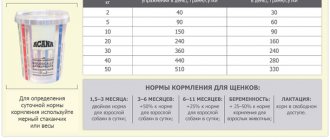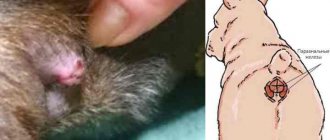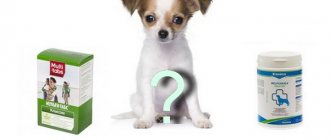Errors in feeding are fraught with malfunctions in the digestive system of four-legged friends. Due to the fact that it is poorly adapted to digest certain foods, you should be careful in filling your pet's diet. In addition to the meat component, nutrition should be enriched with foods of plant origin. Read on to find out what vegetables can be given to dogs.
What vegetables can you give dogs?
The benefits of root vegetables
Vegetables are slow carbohydrates and are important for mammals. They are indigestible coarse dietary fiber. These elements are needed to form a prebiotic environment that promotes better digestibility of meat products.
In addition, vegetables contain the following beneficial components:
- vitamins P and C;
- potassium;
- beta-carotene;
- organic acids;
- magnesium;
- folic acid;
- phytoncides;
- minerals.
Vegetables contain many essential nutrients
Acids have a beneficial effect on the digestive process, and phytoncides destroy harmful microorganisms. Vegetables contain protein, which is the building material for the creation of new cells.
Characteristics of vegetables according to the content of useful elements in them:
- The leaves contain folic acid.
- Vegetables that are dark green, orange or red are beta-carotene.
- Dark green leafy ones - calcium.
Root vegetables and edible parts of plants with yellow pigment have antioxidant effects and protect against radiation.
Raw potatoes are considered a useless food for feeding dogs.
Table 1. Content of elements in greens and root vegetables
| Elements | Names of vegetables |
| Protein | Asparagus, peas, corn, broccoli, spinach |
| Cellulose | Brussels sprouts, green beans, sweet corn, pumpkin, carrots, onions, green peas |
| Carbohydrates | Zucchini, peppers, leeks, tomatoes, lettuce, radishes |
White cabbage
IMPORTANT! A healthy, active dog, not restricted in its diet by a veterinarian, can and should eat cabbage!
The main part of the menu of a domesticated predator consists of 70-80% products rich in animal protein. Vegetables and grains saturated with natural vitamins and microelements occupy the remaining, but no less important place .
Benefit
Cabbage contains natural antioxidants, vitamins and fiber necessary for digestion, is a source of calcium, sulfur, potassium, phosphorus, beta-carotene and vitamins A, B and C, prevents the development of cancer and improves the condition of the skin and coat.
Dog owners tell how their pets enjoy eating cabbage . There is information that many dogs like to gnaw on heads of cabbage, hard parts of leaves, and play with stalks. After such a feast, undigested pieces appear in the feces of the mischievous people. No need to worry about this.
Vegetative food is poorly absorbed by the dog's body. Their digestive system lacks enzymes involved in the breakdown of cellulose. Question: why feed an animal something it cannot digest?
The content of cabbage in your pet’s diet is very important! The affordable vegetable is rich in vitamins and microelements, so necessary for a living creature, and takes an active part in digestion.
Why is a plant-based diet so important?
Carnivores are not able to extract energy from complex carbohydrates - this is a feature of herbivores . Coarse fiber from raw vegetables and bran is a nutrient medium for the development and formation of healthy microflora, stimulates the functioning of the predator’s intestines and removes excess cholesterol.
Cabbage is a source of slow carbohydrates and dietary fiber, which create healthy microflora and help the animal digest meat.
IMPORTANT! Excluding vegetables from the diet leads to a decrease in the number of beneficial bacteria in the microenvironment of the gastrointestinal tract and their replacement by pathogenic colonies of E. coli and yeast, which cause dysbacteriosis.
Features of the digestive system
To understand what components of the diet and in what quantities are needed by representatives of the canine family, you should study the features of the digestion process.
Interesting Facts:
- Compared to humans, the microflora of dogs is less saturated - 10,000 bacteria per 1 g of tract, while in humans this figure is 10,000,000 per 1 g.
- The number of teeth is 42. The main function is tearing and grinding food, not chewing.
- The number of taste buds is 1,700. For comparison, a person has 9,000.
- Relative to the body, the dog's stomach is 10 times larger than that of herbivores. When full, it contains 10 times more hydrochloric acid than in the human stomach.
- Small colon. At the same time, it takes up to 1 day to process meat, while for herbivores the digestive process takes up to 5 days.
- Dogs' bodies do not have the enzymes necessary to break down plant fiber.
Dogs' bodies are not equipped to produce enzymes to digest plant fiber.
Based on the above, the following conclusions can be drawn. Vegetables and greens are partially absorbed by the body. The state of the intestinal microflora also indicates limited digestive capabilities. The size of the stomach indicates the ability to absorb large volumes of food. The structure of the jaw, the length of the colon and the characteristics of the production of hydrochloric acid indicate the need to eat easily digestible roughage. The taste of food, based on a small number of receptors, does not play an important role in the absorption of food.
Despite the above facts and the absence of a multi-chambered stomach, dogs need vegetables in small quantities
Wild past
Biologically, a dog is a predator. By analogy with her ancestors, she prefers meat.
However, in addition to food of animal origin, the wolf does not disdain plant foods. It feeds on herbs, berries, plant roots, herbivore excrement and insects. At the genetic level, this indicates a need for plant foods.
The basis of the wolf diet is meat
Enzyme fence
When eating herbivores, wolves first of all paid attention to the stomach. There is a version that this behavior is due to the need to receive the digested plant food found in it. Due to the lack of the necessary enzymes in the canine body for its processing, this hypothesis seems logical.
However, this did not solve the problem of lack of enzymes, since the rumen does not contain them. In addition, the wolves’ body is not able to use the remnants of foreign enzymes. These facts refute the thesis of enzyme sampling.
It is more logical to assume that wolves eat semi-digested plant food in order to improve the processing of meat in the body. Therefore, veterinarian nutritionists recommend that when feeding tripe to dogs, do not wash away the green silage from it.
A dog's digestion is not designed to process grass shoots.
Is there any harm?
Fresh cabbage eaten in large quantities can negatively affect your health . Usually the glutton ends up with gas formation, seething in the belly, bloating and strong winds. Sometimes this is accompanied by discomfort in the intestines.
Dogs suffering from diseases of the gastrointestinal tract and thyroid gland should be given cabbage according to the recommendation of a doctor, in doses, after appropriate treatment. The owner must remember that even in small quantities the plant contains a natural component called thiocyanate , which in large doses suppresses the thyroid gland and leads to hypothyroidism.
If a dog cannot imagine life without a tasty treat and wants to eat it often and a lot, then it is better to boil the vegetable before consumption in order to neutralize the unwanted substance.
Reasons why you can't
Cases of individual intolerance to white cabbage in dogs are quite rare. Small species are characterized by difficult digestion of plant foods and difficult gas separation. In this case, the cabbage should be steamed, stewed, boiled and served in small portions .
Attention to the animal's diet is required for certain forms of diseases and allergies. Typically, such pets are under medical supervision and strict dietary control.
ATTENTION! Add new products gradually, observing the dog's reaction.
What to do if your pet has eaten too much and feels bad?
In case of overeating, and such cases are unique and isolated, some symptoms may occur :
- Difficulty in digestion caused by excessive consumption of food;
- Excessive gas formation, accompanied by bloating and pain in the intestines;
- The animal is inactive, lies for a long time, stretches unnaturally, whines;
- He does not allow himself to be examined due to pain in the peritoneal area.
The owner should contact a veterinarian, not self-medicate and not give any medications , blurring the overall picture of the condition. At the appointment, describe in detail the dog’s behavior from the moment the illness began, trying to indicate as accurately as possible the time and cause of the deterioration in health.
Dogs' need for root vegetables
Due to the fact that vegetables contain indigestible fiber, the dog's body cannot extract energy from the carbohydrates they contain. However, coarse dietary fiber is a beneficial environment for the formation of healthy intestinal microflora and activates peristalsis.
A lack of vegetables in the diet can lead to a decrease in the number of beneficial microorganisms in the gastrointestinal tract and their replacement by harmful microbes, fungi and E. coli. This process leads to the development of dysbiosis.
In a natural food system, meat is the basis of a dog’s diet.
When planning your dog’s nutrition, you should take into account that the lion’s share of the diet, up to 80%, should be based on products containing animal protein. The remaining 20% is cereals and vegetables. The recommended proportion of root vegetables is at least 5%.
Vegetables do not have to be included in your daily diet. First of all, you should determine how acceptable the root vegetable is for the pet’s digestive system. To do this, you need to introduce one name at a time into the nutrition plan and observe the body’s reaction.
The vegetable menu should reflect the climatic characteristics of the region and seasonality.
The most nutritious vegetables are those that you grow yourself.
Do dogs need greenery?
Despite the fact that four-legged friends are not fans of young grass shoots, they should be included in the diet. The following types of greens and algae have a positive effect on your pet’s body:
- spinach;
- parsley;
- leaf salad;
- seaweed;
- dill;
- burdock;
- nettle leaves.
Several times a month it is recommended to enrich the menu with lemon balm, basil and mint.
Sea kale improves the condition of the skin and hair due to the iodine it contains
Is it possible to give dogs cabbage?
In many families, dogs are considered members of the family, not just four-legged animals. That's why they treat them like people. Dogs really are like people. They also need to move, eat and bathe every day. The market is now full of dog foods that claim on the box that they contain vegetables and are therefore healthy. In fact, there is nothing healthier than real vegetables to feed your dog. Fresh vegetables are full of real nutrients that are beneficial for the health of the animal's coat, skin, bones, teeth, eyes and entire body. In any case, they are healthier than any starch-containing products found in industrially produced feed. Although dogs primarily eat meat and bones, 30% of their daily diet should consist of vegetables.
Dogs can eat broccoli, cabbage, lettuce, zucchini, carrots, cauliflower, cucumber, beans, turnips and more. Each of these vegetables will add variety to your dog's diet and provide it with nutrients. Today we will find out how healthy cabbage is for dogs. There are several types of cabbage: Savoy, red, Brussels sprouts, Chinese, Bok Choy and many others. All of them are suitable as food for our pets.
Every dog breeder should know that:
- If you steam cabbage, all the vitamins will be retained in it, and its consistency will become such that it will not harm the dog’s digestive tract, but on the contrary, will promote digestion. The fiber contained in cabbage binds to the animal's bile acid in the digestive tract. This facilitates the removal of bile acids from the body. Raw cabbage also works in a similar way, but steamed cabbage is healthier for your dog.
- Cabbage is rich in vitamins C, A, K, potassium and fiber. It contains many antioxidants that help fight free radicals in the blood, thereby participating in the prevention of diseases such as cancer.
- Vegetables for dogs should be cooked without adding salt, sugar or spices.
- To avoid allergic reactions from your dog’s body, you should always consult with your veterinarian before introducing vegetables into its diet.
Other vegetables
Not all vegetables are safe for dogs. Some may be completely harmless to humans, but not to animals. These include onions, garlic, mushrooms, rhubarb and tomato. They should not be given to a dog. Before giving something to an animal, you first need to clarify whether it is possible to do it.
Disclaimer: The information provided in this article is intended for the reader's information only. It is not a substitute for consultation with a veterinarian.
https://www.buzzle.com/articles/is-cabbage-good-for-dogs.html
Allowed and prohibited vegetables
Before creating a diet, you should understand which root vegetables will benefit the body, which ones can harm or are useless. Among the wide variety of vegetables growing in the Russian Federation, most are suitable for consumption.
Allowed vegetables
The names of root vegetables listed in the table are in most cases useful for your pet. However, the possibility of individual intolerance to some vegetables should be taken into account.
Table 2. Allowed vegetables
| Vegetables | Properties |
| Pumpkin |
|
| Green bean pods |
|
| Zucchini |
|
| Turnip |
|
| Cucumber |
|
| Carrot |
|
| bell pepper |
|
| Celery |
|
| Radish |
|
Pumpkin helps improve digestive processes
Recommendations for eating certain vegetables:
- It is not recommended to give radishes to dogs with a weak digestive system.
- Among the existing varieties of peppers, the most useful is red. It contains the largest amount of vitamins.
- Since turnips have a laxative effect, this root vegetable should not be fed to pets with diseases of the gastrointestinal tract, kidneys or liver.
Pumpkin is considered one of the healthiest vegetables for dogs.
Eating carrots can cause allergies
Controversial vegetables
There are a number of root vegetables, the feeding of which is not strictly prohibited. However, veterinary nutritionists disagree on the appropriateness of their use in the diet.
Table 3. Controversial vegetables
| Vegetables | Characteristic |
| Beet | Despite the large amount of folic acid, potassium and antioxidants, this root vegetable affects the development of allergic reactions. If consumed in excess, it causes diarrhea. Helps enhance hair color in pets with red hair |
| Eggplant | Contain phosphorus, carotene, fiber and iron. Not suitable for pets with liver pathologies |
| Tomato | Since it causes diarrhea when overeaten, many dog owners do not include it in their diet. In addition, it can cause problems with the heart muscle and eating disorders. Safe in small quantities |
If a dog eats the listed root vegetables with appetite, you should not deny her the pleasure.
Tomatoes help remove plaque from teeth
Is it possible to give dogs cabbage?
Many dog owners are wary of including this cruciferous vegetable in their diet. However, four-legged friends happily eat various types of this root vegetable. It is a natural antioxidant and rich in fiber. In addition, eating vegetables has a beneficial effect on the condition of the coat. Seaweed is also good for pets.
Cabbage is a storehouse of dietary fiber. It promotes the formation of healthy intestinal microflora and helps the dog digest meat.
Pets with pathologies of the endocrine system and gastrointestinal tract should be given this root vegetable in doses. Thiocyanate, present in the composition, in large doses inhibits the activity of the thyroid gland and contributes to the development of hypothyroidism.
Causes of thyroid pathology
Broccoli
The myth about the unsuitability of root vegetables arose due to the fault of isocyanate. If consumed in excess, this element is toxic and fatal. However, to achieve this effect, you need to feed your dog the root vegetable every day as its main food source.
Broccoli is rich in vitamins and folic acid. It contains as much beta-carotene as carrots and pumpkin. It improves digestive processes and is a preventative against constipation. Especially useful for older animals.
Frozen products retain beneficial elements longer
White cabbage
It is a source of phosphorus and vitamins C, A and group B. Pets love to gnaw on heads of cabbage, which has a beneficial effect on the condition of the jaw muscles. Due to the fact that when fresh it enhances gas formation processes, veterinarians recommend dosing its use. From the point of view of the effect on the body, it is better to give it boiled or stewed.
Eating unprocessed white cabbage may cause increased gas formation.
Colored
Can be served in any form. It is advisable to combine root vegetables with offal and meat.
Compared to white cabbage, coarse fiber in colored cabbage is contained in smaller quantities. This promotes its rapid absorption and does not irritate the gastric mucosa.
Contains vitamins PP, C, B2, K and potassium. Useful in the treatment of diseases of the gastrointestinal tract, arthritis and pathologies of the motor system. Promotes bile secretion, normalizes stool, prevents obesity and serves as a good anti-inflammatory agent.
Cauliflower is digested faster than other varieties of cabbage
Not recommended
There are a number of root vegetables, the consumption of which will not have a positive effect on the body, and in some cases may cause harm.
Table 4. Not recommended vegetables
| Vegetables | Characteristic |
| Corn | It is neither a healthy nor a dangerous vegetable. Due to its low cost, it is found in many industrial economy-class feeds. Due to the large amount of fiber present in it, it promotes rapid nutritional saturation. However, the dog’s body is not able to digest this root vegetable. |
| Garlic and onion | Contains an element that has a negative effect on blood cells. In large doses, thiosulfates contribute to the development of anemia. However, a similar pathology can occur when eating at least 6 heads of garlic per week. |
| Potato | In its raw form it contains the toxic substance solanine. Boiled potatoes are a valuable source of carbohydrates that prevent excess weight gain. |
It is not advisable to include corn in your pet's diet.
Method of preparing vegetables
Root vegetables can be fed raw, stewed or boiled. The method and need for heat treatment depends on the characteristics of the vegetable. Most are better digested by the digestive system after processing. Some dog lovers recommend alternating cooking methods. It's also helpful to change up the cutting options periodically, varying between blending or dicing. It is preferable to give grated root vegetables to older animals.
Stewed vegetables are better digestible
Chewing raw vegetables prevents tartar from forming on your teeth.
Advice from veterinarian nutritionists:
- Raw root vegetables are not suitable for feeding puppies. They are not able to chew them thoroughly.
- Some vegetables, such as carrots, contain beta-carotene. This element is better absorbed when steamed.
- The celery stalk is very tough. Dogs preferentially swallow the root vegetable without chewing. Therefore, before feeding it should be cut into small pieces or crushed.
- Eggplants should be given no more than once a week.
- Consumption of canned vegetables is prohibited.
- It is advisable to feed root vegetables at the same time as meat.
- Green beans make a great addition to tripe-based dishes.
- You should not combine raw vegetables with fermented milk products.
- It is recommended not to give red root vegetables to pets with white hair, as there is a high probability of allergic reactions.
Useful microelements are better preserved in unprocessed root vegetables
By following these simple recommendations, you can enrich your pet’s diet and improve its digestive processes.











